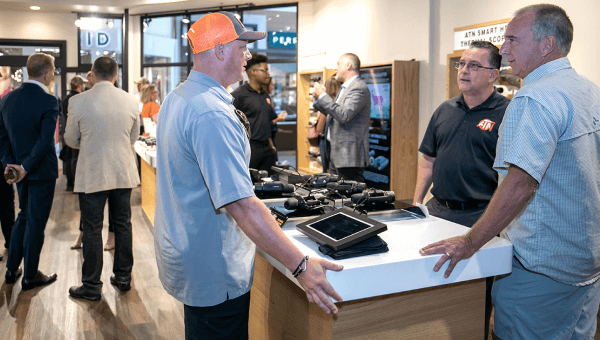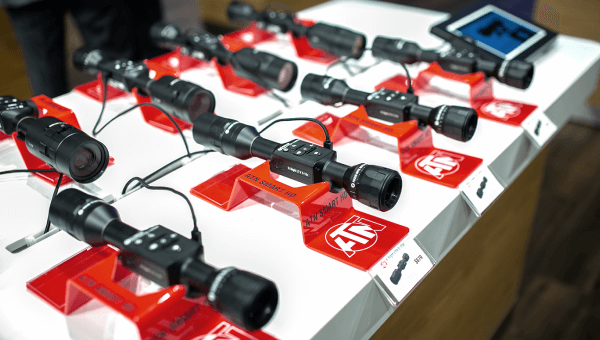Thermal Imaging and Positive ID

Five minutes into a stand, you have the wind right and your call was placed perfect. You made no noise getting in, you've done your homework on where the coyotes have been staying and hanging out and you're letting the field settle for just a few minutes. Finally, you decide it's time to start your calling and you let your e-caller ring out a howl into the darkness of the night. As you're starting to scan the field, you see something coming towards you and you get on your gun. Here it comes, 400 yards, 300 yards...all the way to 100 yards and it stops and turns broadside. You click the safety off, settle on the shoulder and....wait, something doesn't seem quite right, so you wait. What was it that you seen that made you question taking that shot? Was it the posture? Was it the tail? The way the dog ran? Something just didn't seem right. At that moment, your friend beside you says, "Don't shoot...it's not a coyote" as you let out a big sigh of relief. Surprisingly, this isn't something that's uncommon to people who have hunted coyotes for any length of time...so let's discuss why and how to avoid making that mistake.

The number one thing, as a responsible and law-abiding hunter that you should do before anything else is make 100% sure of what you're shooting when you pull the trigger. Another equally important factor to always keep in the forefront of your mind is what is beyond your target. There is no hunter alive that can pull a bullet back once it's left the barrel, so target ID and background knowledge should always be of the utmost importance in the field. If you don't always keep these two things in the front of your mind while you're hunting, then you're honestly setting yourself up for failure at some point. It may not be today, this week or even this year, but at some point, you will face a similar situation.
Understanding the animals that you're hunting and how they move and interact with different environmental and man-made encounters only comes with time and experience. I've spent thousands of hours in fields and woods watching coyotes come in to a call, mouse a field, fight with one another or just look for a place to lay down and take a nap. Being able to ID a coyote with a Night Vision Scope from the farmers pet dog that he is very fond of, is a big difference between losing land and having to explain you shot something you thought was something else...and keeping a landowner happy with the job that you're doing for predator deprivation. Some of the tell-tale signs are size, how they walk/move and their tails. This is a lot easier to decide if you're using something in the Night Vision product line, such as the ATN X-Sight 4K Pro, which gives you a 4K Sensor to use for day and night. With a good external IR Illuminator, this will allow you to make target ID well out to 1,000 yards. I've personally counted individual deer on a farm in pitch black conditions at 1,000 yards, which thankfully is well past the distance that I would feel comfortable shooting at night. That gives me more than enough time in an open field for an animal to close the distance to a more acceptable shooting distance and still can have ample time in deciding exactly what is coming in to your call.

Where this can become more of a problem is for those people who are utilizing thermal imaging scopes. Your more experienced hunters can even have moments where they will hesitate or wait for confirmation before pulling the trigger, so it's not only acceptable but it's expected out of people who are using them for the first couple of times. For hunters like myself, I regularly take shots more than 150-400 yards depending on the terrain I am hunting. Obviously, the closer you can call them in, the better off you are, but in some instances, that's not always as easy as it sounds. That's why, I like to use the ThOR 4 640 4-40x. It provides an excellent base magnification of 4x and with the 640 core, I can maintain excellent clarity through the zoom range to still be able to make safe shots and 100% positive identification. If you're a hog hunter that never takes a shot past 100 yards, then your needs are going to differ greatly from someone like myself. It's all about what you're hunting and how you're hunting it. We here at ATN take great pride in our efforts to set a high standard of excellence and achievement. If you want any help with figuring out how to match an optic to your specific needs, or just have questions in general, please don't hesitate to reach out to us because we would be more than glad to help you out!






